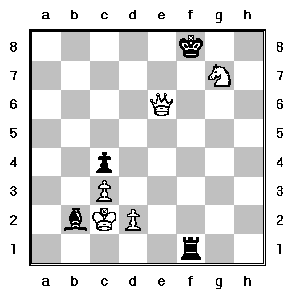Chess King And Rook Switch
A player who performs a forbidden castling must return the king and the rook to their original places and then move the king if there is another legal king move including castling on the other side. Before you can do the switch some conditions must be met.
 Can I Take The Rook With The King White To Move Chess
Can I Take The Rook With The King White To Move ChessThe king must not have been moved before.

Chess king and rook switch. Castling is a special type of chess move. This is simple logic. The king and the rook move towards each other and swap places.
To do this move your king not one but two spaces towards the rook you are castling with. Castling is a special move in chess that involves the king and the rook. This is the only situation in which you would move two of your own chess pieces in the same move.
Castling only involves the king and the rook no other chess pieces and it is believed that it was invented around the 1500s in order to speed up the game. The king rook switch is called chess castling. When castling you simultaneously move your king and one of your rooks.
The king moves two squares towards a rook and that rook moves to the square on the other side of the king. Castling gets your king out of the center of the board where all the action is taking place. Castling is the only move in chess where two pieces the king and rook move at the same time.
It is the only time two pieces move at once but the board must satisfy certain criteria for a castling to be appropriate. It can work well as a defensive strategy but also can free up a rook. Castling is a special king move in chess in which the king and the rook are allowed to move at the same time.
There must not be any piece between the king and the rook.
 Achieving Checkmate W Only King Queen Chess Youtube
Achieving Checkmate W Only King Queen Chess Youtube Four Important Rules Of Castling 1 The King And Rook May Not
Four Important Rules Of Castling 1 The King And Rook May Not How To Castle In Chess Chess Com
How To Castle In Chess Chess Com London Chess Classic 2019
London Chess Classic 2019 How To Castle In Fischer Random Chess Chess960 Chess Com
How To Castle In Fischer Random Chess Chess960 Chess Com Chess Rules Chess House
Chess Rules Chess House Is Castling Possible When Castling Rook Is Under Attack Quora
Is Castling Possible When Castling Rook Is Under Attack Quora How To Make The King Rook Change Place In Chess Chess Moves
How To Make The King Rook Change Place In Chess Chess Moves